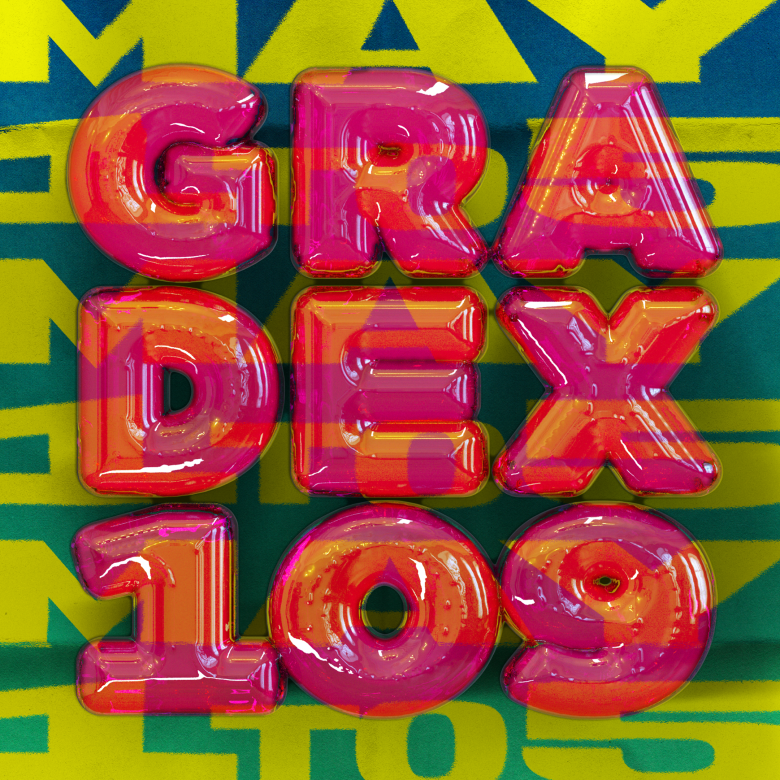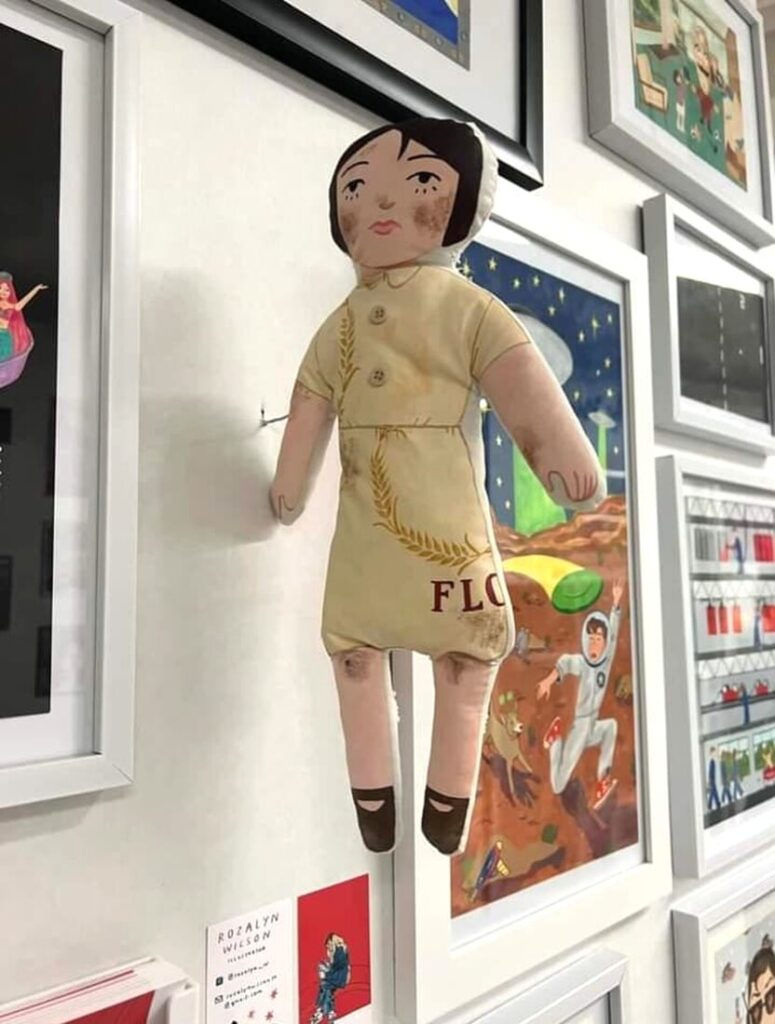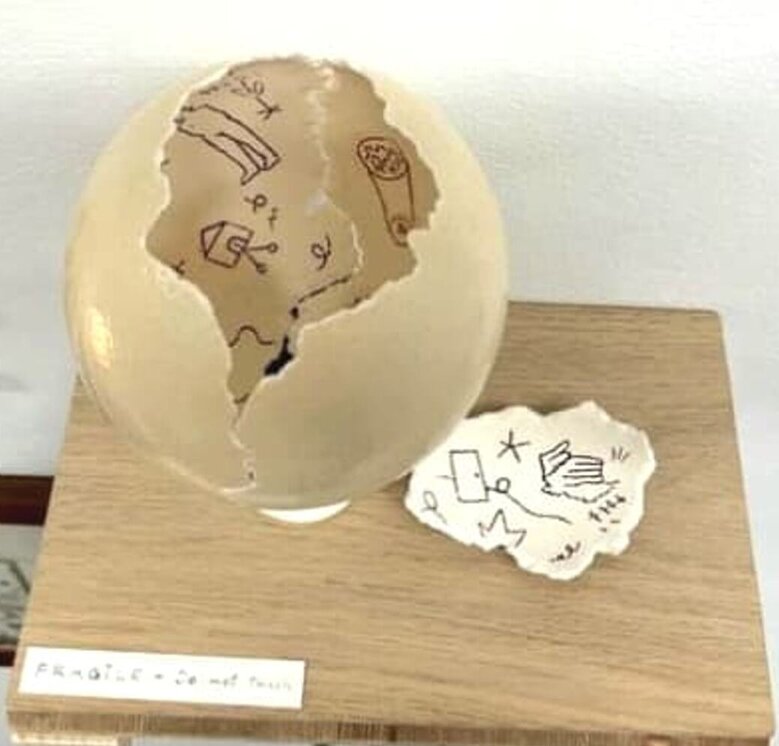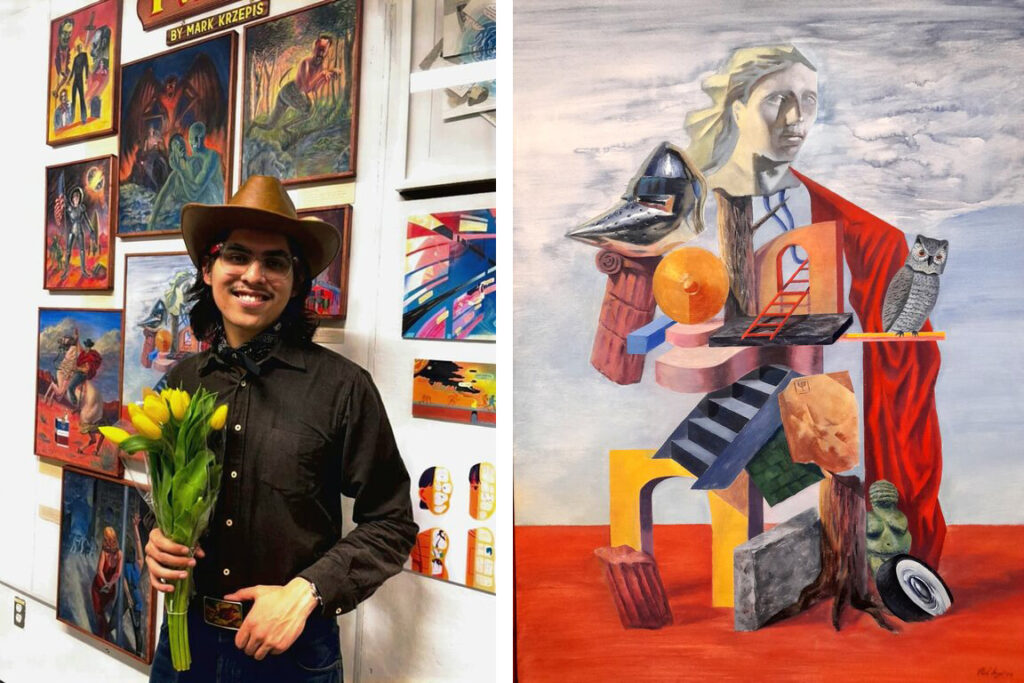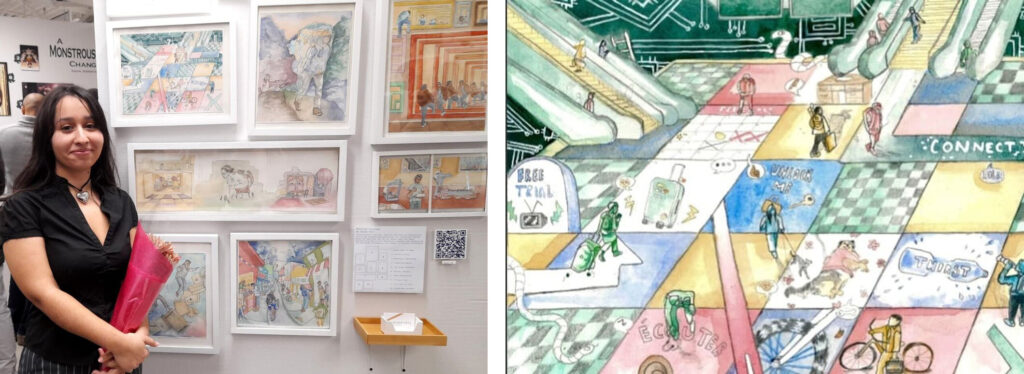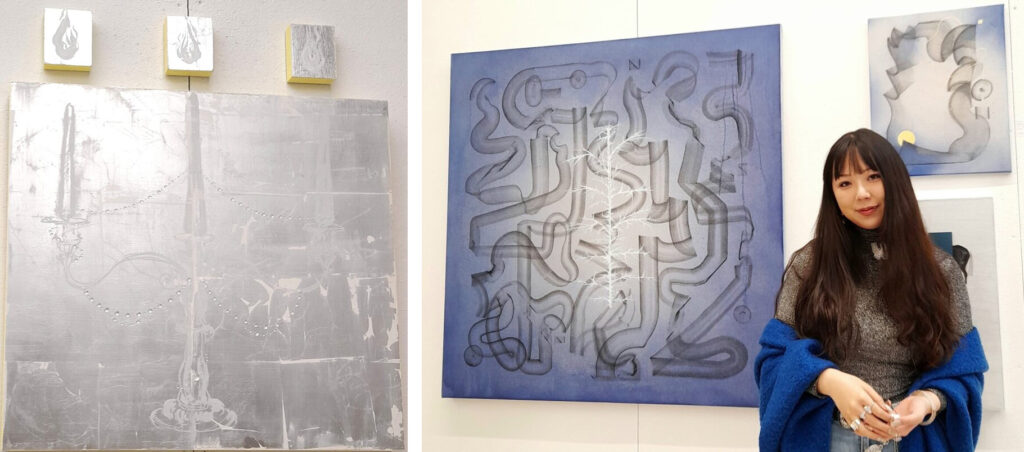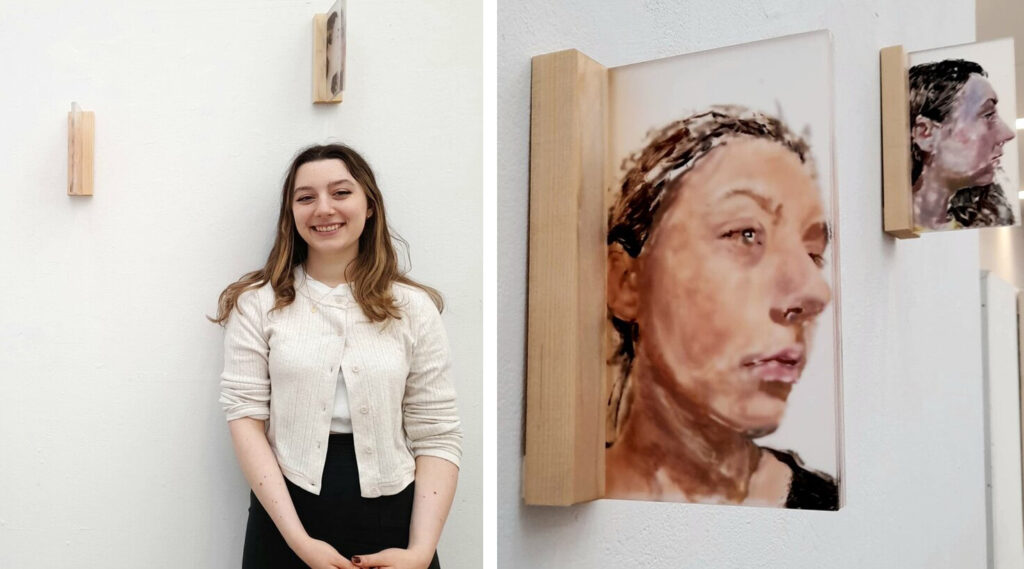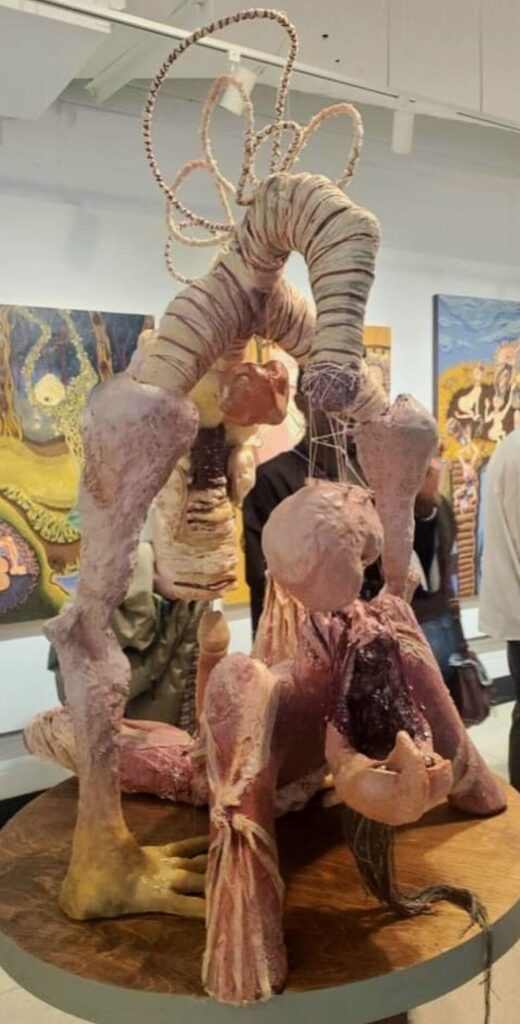If you’ve been on McCaul Street lately, you can’t have missed the posters promoting OCAD University’s 109th graduate exhibit “GRADEX 109” in hot pink bubble letters. Toronto’s largest free art and design exhibition, GradEx, has always delivered an exciting, well-rounded array of emerging artists; its 109th show promised the most experimental work yet.
I made my way to the Great Hall to see a performance by Pixel Heller to kick off the opening reception. Previously shown at the Artist Project, the performance featured stilt walkers in vibrantly-coloured Moko Jumbie masks as an ode to Pixel’s cultural heritage and celebration of diasporic resilience. The magic of Pixel’s performance engaged many visitors who followed their path in awe and excitement.
Of all departments, this year’s Illustration department had the largest number of exhibitors in GradEx history. The sixth floor offered a large variety of work that, in a refreshing turn, saw emerging illustrators lean toward analogue approaches in spite of the prior years’ overwhelming presentation of digital artwork. Aside from illustrative work, artists incorporated other mediums into their displays such as Rozalyn Wilson’s handmade doll, Leah Chudoba’s fungi animation, and Nik Clydesdale’s painted ostrich egg. I found that there was an effort to challenge the line between fine art and design.
Rozalyn Wilson, handmade doll
Nik Clydesdale, painted ostrich egg
Mark Krzepis’ “PVLPIT” investigates the shared motifs between lowbrow and highbrow art. The central painting in Krzepis’ display, “Venus,” illustrates the idea of his thesis as it contrasts visual elements of beauty in a manner that offers cubist, dadaist, and Ettore Sottsass-style craftsmanship. A broken Greek ionic column at the bottom represents ancient architectural conventions with decorative and curved features, whereas the overall composition resembles Sottsass’ Carlton bookshelf, which rejected ornamentation and used commonly available, man-made materials. The bust of the Capitoline Venus juxtaposed with the Venus of Willendorf captures the evolution of Paleolithic modes of artmaking and human representation to the refined techniques and realism of the Roman era. Despite the initial differences between them, the elements share similarities: the Carlton bookshelf and the Greek column serve the purpose of supporting weight, while both Venuses embody ideals of European beauty, however varied.
Mark Krzepis (left) and his painting Venus (right)
Grace Vali’s “Materialistic Cravings” considers human evolution in terms of modern consumption. The ten surrealist gouache and graphite paintings of her thesis dissect the correlation between human desire and consumerism in a humorous, self-aware manner while provoking viewers to analyze their own measures of consumption. Questioning our gravitation towards products that do not always satisfy us, Grace in her work sees overconsumption as a response to our desire to achieve contentment. For instance, “Algorithm Mania” reinterprets the classic board game Snakes and Ladders to showcase how the persistence of advertisements and urgency of sales encourage unnecessary spending; blurring the line between wanting more and satisfying genuine need. The boardgame’s numbered squares hold products that entice shoppers with false promises including “free trials,” pets, and various home and fashion goods. Here, Grace encapsulates how modern consumer activity is increased by desire, which is much more invasive and addictive than need. Consumerism itself has changed our perception of the world into a container of disposable objects.
Grace Vali in front of her paintings (left) and Algorithm Mania (right)
The Drawing and Painting department too shows artists confronting the conventions of fine art through material experimentation and by finding meaning within the materials. This is best evidenced in Vicki Ying Shi’s mixed media work, which examines the complexities of contemporary womanhood through embracing beauty, pain, and femininity. For instance, the three-dimensional, beaded detail work of “Whispers of Light,” was created with gel nail polish as it is often considered a ‘feminine’ accessory. Vicki uses nail varnish, transforming its categorization from a beauty product into an artistic tool. Her work brings together beauty treatments and high art. Subsequently, the candelabra painted on reflective silver foil dances between appearance and disappearance, creating a ghostly visual illusion that prompts viewers to contemplate the beauty of light and shadow.
Vicki Ying Shi, Whispers of Light (left) and Vicki Ying Shi in front of her work
Danielle Vincent’s “In the Threshold” features oil self-portraits on layered sheets of frosted plastic, playing with the perception of depth and transparency. They offer intimate depictions of the artist and evoke Jenny Saville sensibilities through Danielle’s buttery brushstrokes and delicate mark-making.
Danielle Vincent (left) and her work In the Threshold (right)
Sculptural works were also included in GradEX 109, including Anthony Micallef’s sculpture that finds beauty in the violence and grotesqueness of human decay. While the bodies are preserved and wrapped up, the morbid disfiguration and the ants crawling around the figure’s mouth present the complexity of death and decay.
Sculpture by Anthony Micallef
Text and photo: Tiffany Duong
*Exhibition information: GradEx 109, May 1 – 5, 2024, OCAD U, 100 McCaul St.

